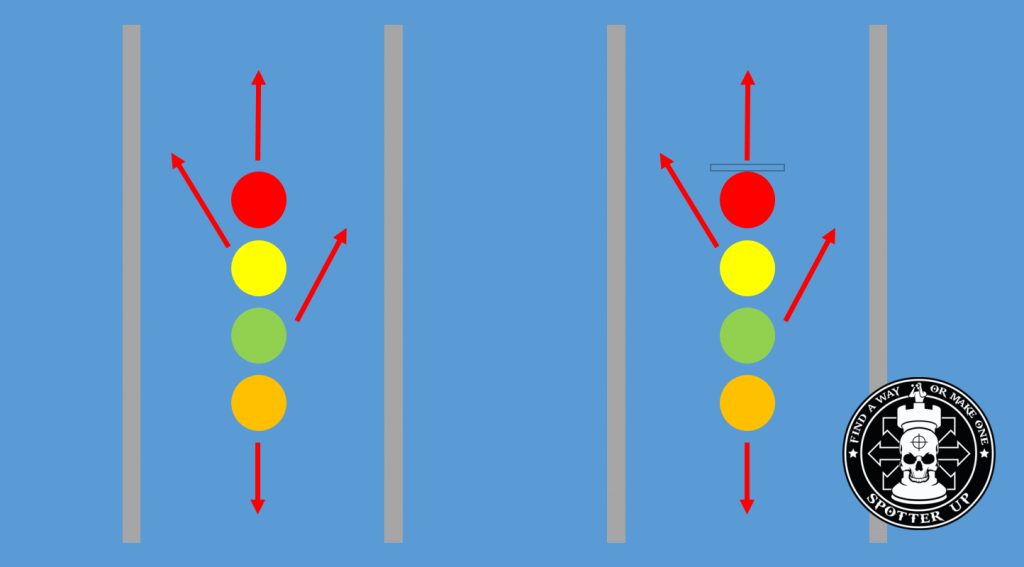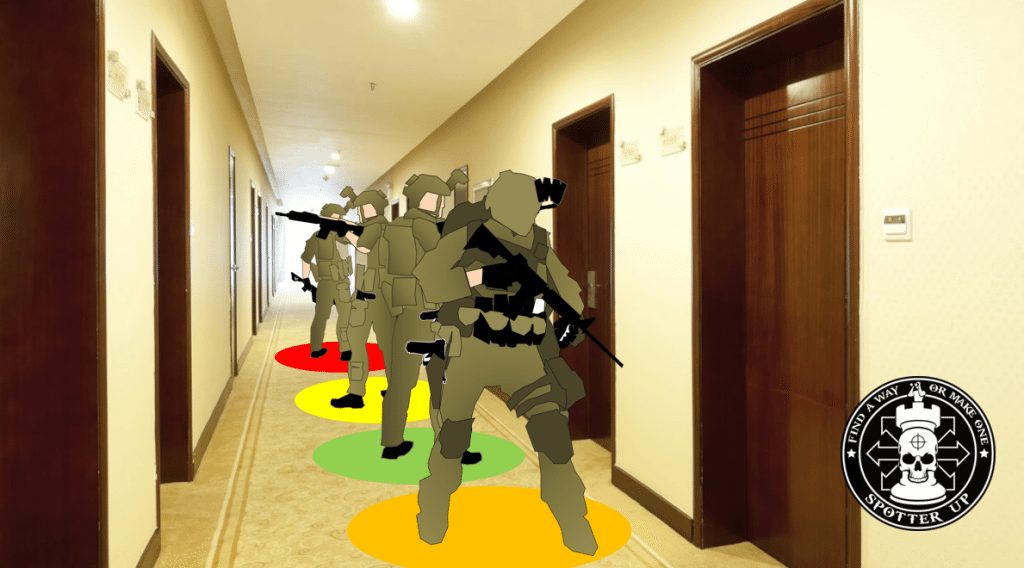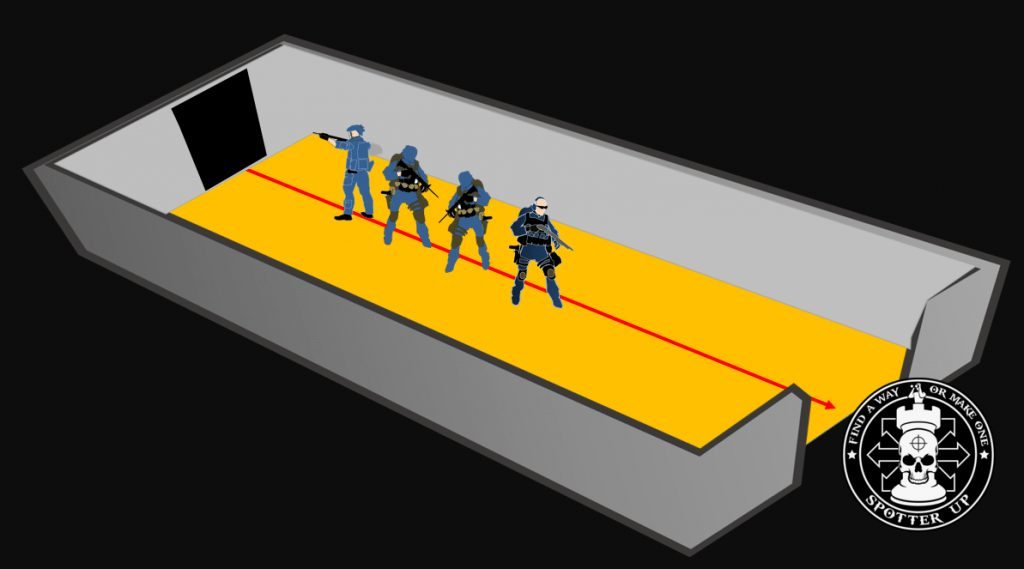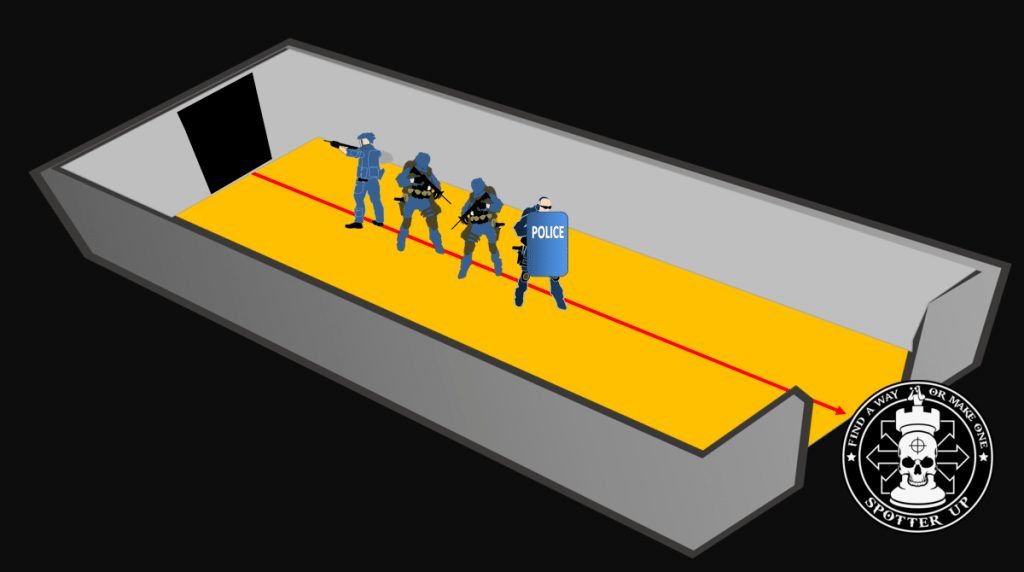Adversity has the effect of eliciting talents, which in prosperous circumstances would have lain dormant. Horace
We want to restate this article is not a “be-all” “end-all” article that will solve every ‘tactical’ problem. It is written solely to introduce the concept of tactical movement to those with little experience or knowledge in this area. Theory and Reality are two different things; what works in the classroom will not always work in “life”. Spotter Up will assume “no” responsibility for any use or misuse of information from this article. This article alone will not make the reader an expert in tactics or in firearms nor can it be used as a substitute for PROFESSIONAL TACTICAL TRAINING or WEAPONS TRAINING. Spotter Up advises you to visit our site for training courses with a certified instructor On ALL weapon platforms.
Circumstances are an attribute, detail, or condition with respect to time, place, manner, agent, etc., that accompanies, determines, or modifies a fact or event; it is a modifying or influencing factor. Keeping this in mind, know then, there are no fail safe entries. Every entry by units has pros and cons and there are far too many elements to list here. Trying to list every element would only cause more confusion. Practicing a technique will elicit the reasons why.
Single File Formation: This technique can be used if moving down a hallway. The size of the area, the number of personnel moving in a team and the items which require attention during movement (objects other than people, windows, doors, person (s)) dictates the speed and distance each *operator stands from another operator.
Single file without shield (left) and with shield (right)
Security at the front is provided by the lead operator (red). Rear security is provided by the rear operator (orange). Any threat that appears forward of the lead operator must be handled by him. Any threat that appears at the rear of the team must be handled by the rear operator (orange). The remaining team members follow in a single file formation directly behind the lead operator. (red). The left and right sides of the lead operator are covered by the second and third man in the file (yellow, green). Any threats appearing from nearby doorways or windows on either side of the hallway must be addressed by each respective team member. The team must maintain security during the movement.
Pacing movement should be smooth and not an accordion-like effect with team members attempting to catch up with their partners. The leader sets the pace and should not get overwhelmed by overtaking his area and thereby degrading the effective coverage his flankers and rear security must provide. Too much stimuli can overwhelm team members; a danger from doing this is team members walking into the other’s sector of fire; maintain your areas.
What now?
The single file technique can be used by small or larger teams. The single file technique might be the only option for teams to use when moving down narrow hallways. A heavy-headed formation (T-formation with 2-3 people in front) or double-file formation is best suited for wider hallways because men can spread out and walk shoulder to shoulder at the front of the file. The single file formation is restrictive and slow when opposing doors appear in view.
A ballistic shield can be used to great effect with the single file technique. The second or third man covering the left and right sectors may find their field of vision limited because of the position of the first man with his shield.
This is a very easy technique to maintain. Fire power and security are not optimal using this technique. The cartoon images below illustrate movement of the team (red arrow), items that require their attention (rear door and front doorway) but does not dictate how much gap is between members.
Without Shield
With Shield
Double file movement will be covered in another article.
Images property of Spotterup. Please use as you want but please give Spotterup credit.
Main SWAT image from Policeone.com
*Operator: Officer/Troop member
Brought to you by the dudes at Spotter Up






